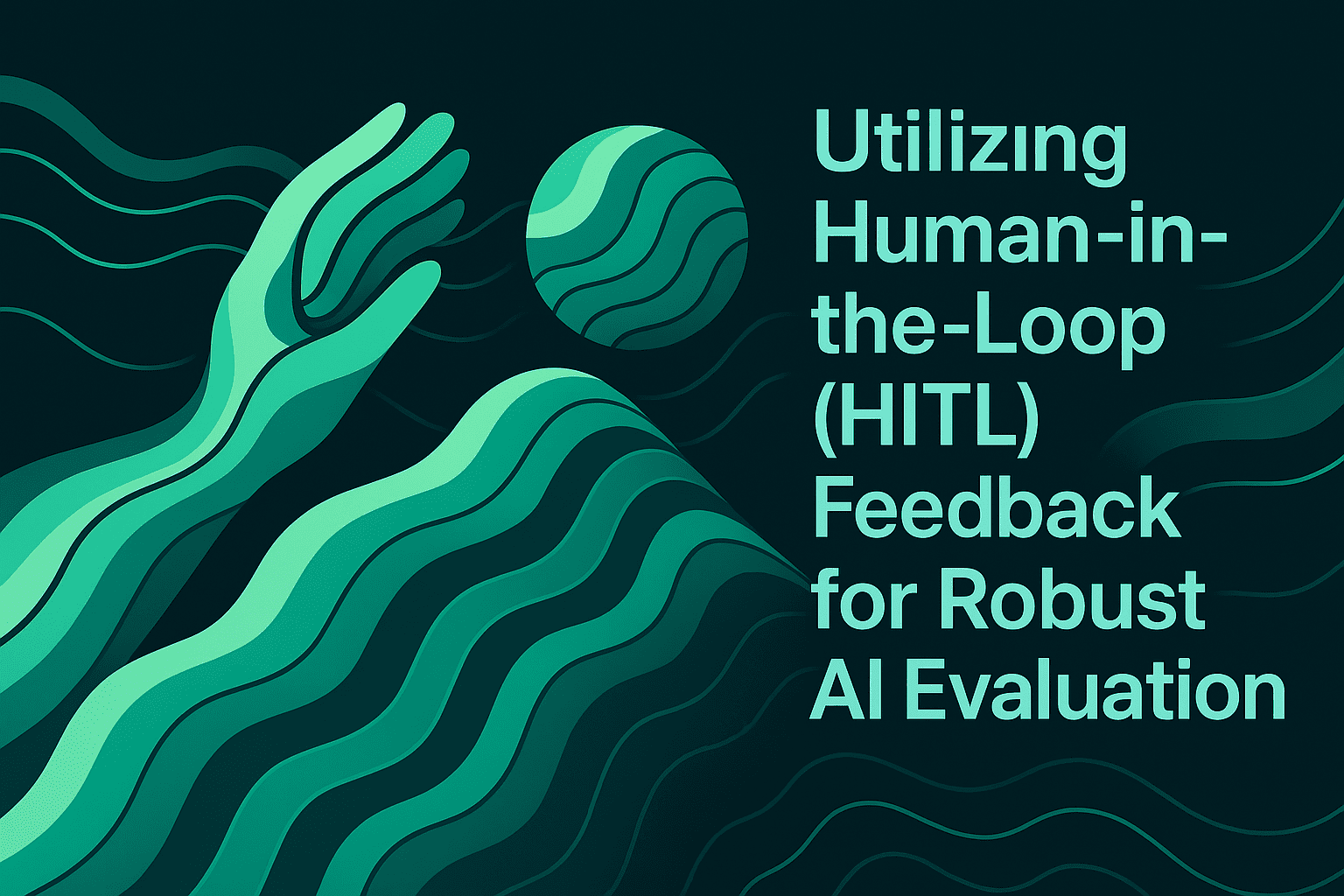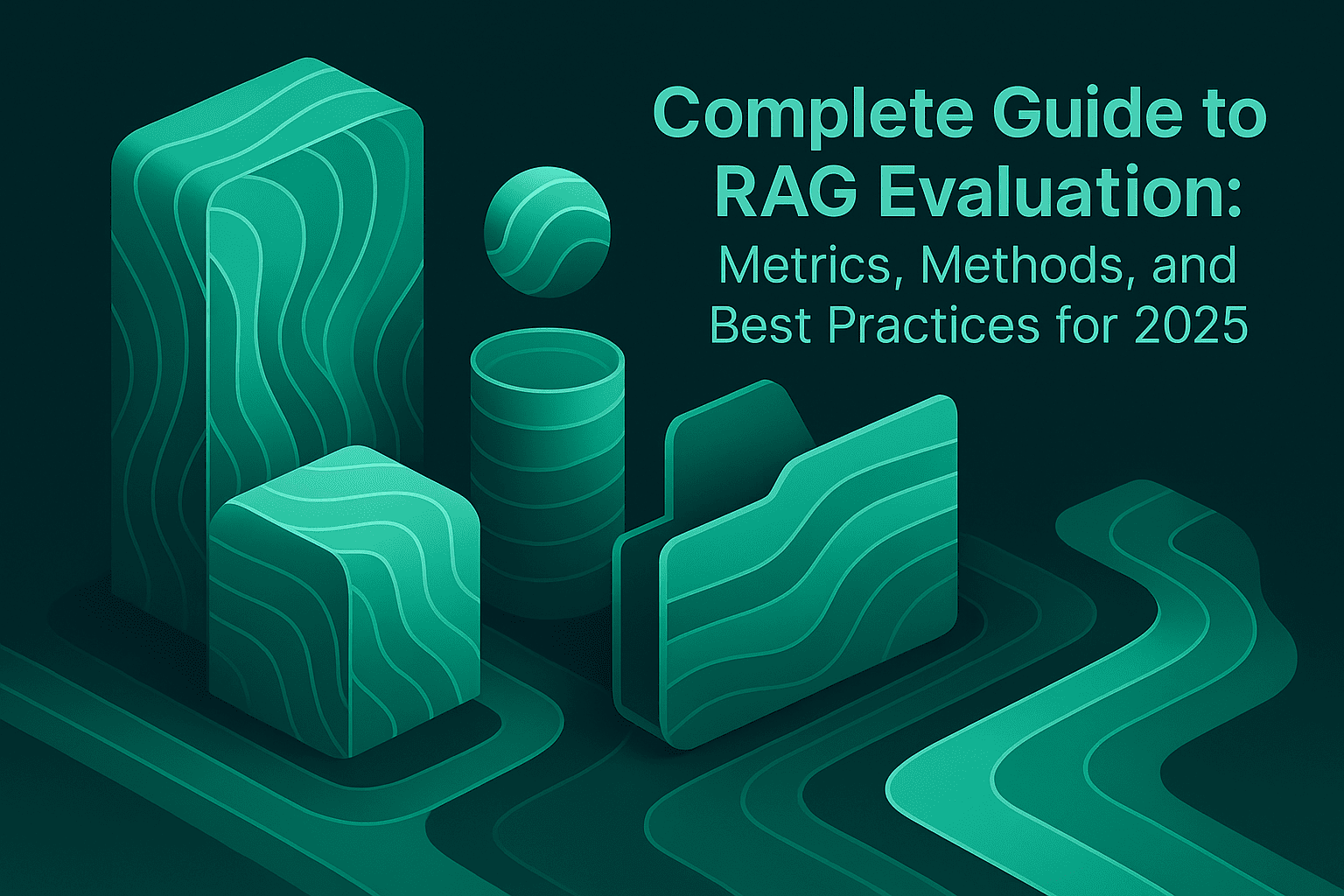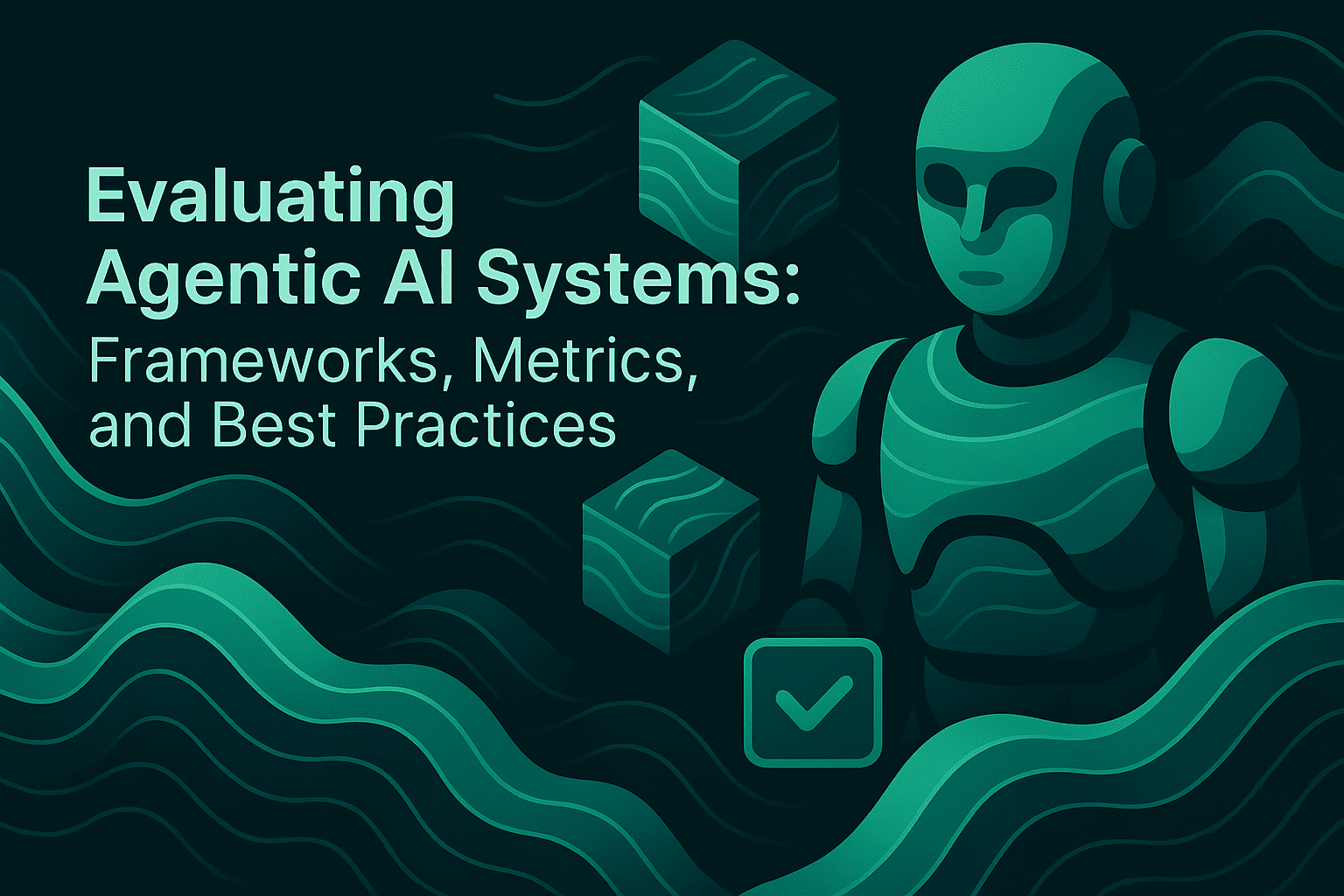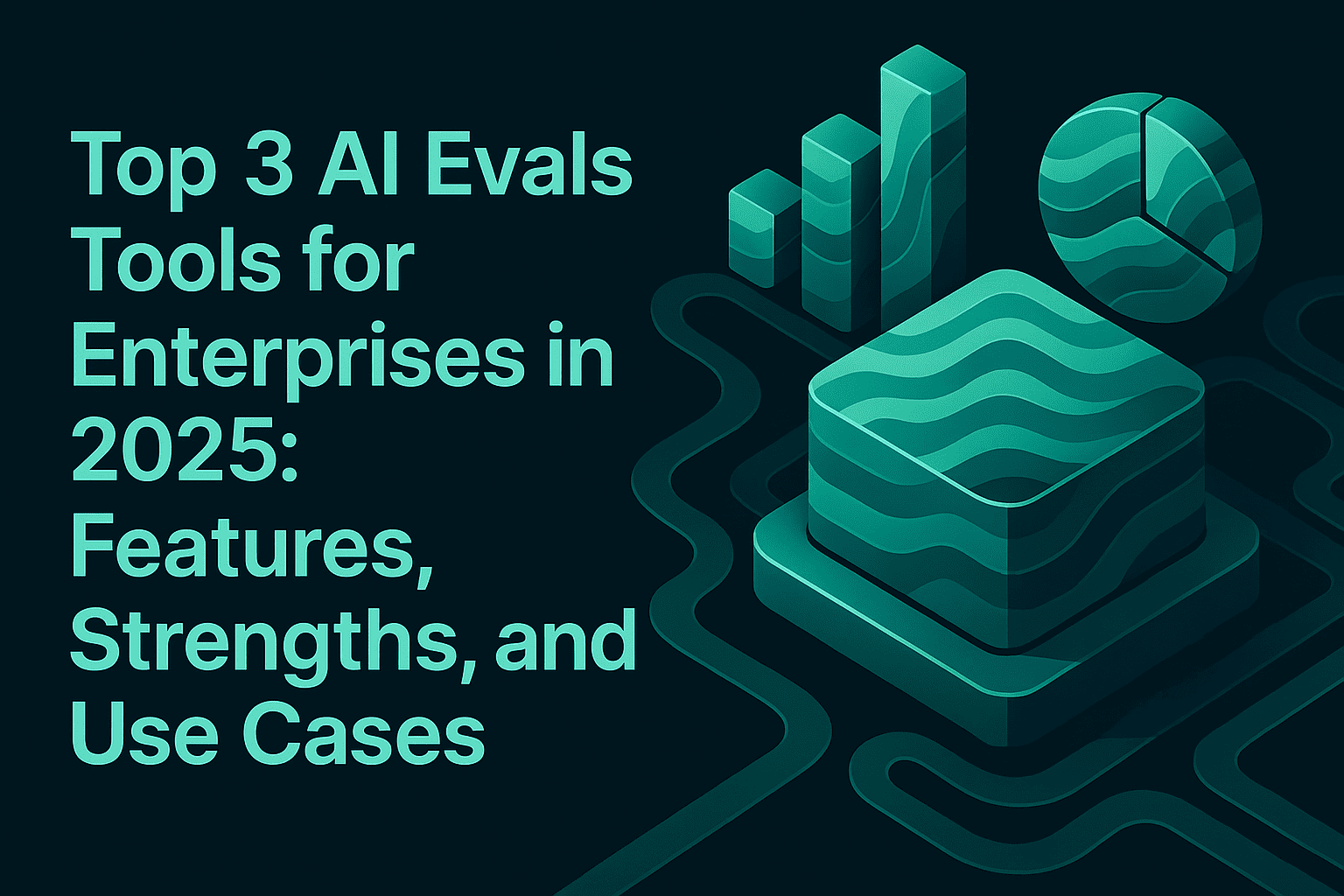Utilizing Human-in-the-Loop (HITL) Feedback for Robust AI Evaluation

TL;DR
Human-in-the-loop evaluation fills critical gaps that automated evaluators miss in agentic AI systems. This guide explains how to integrate Human-in-the-loop with machine evaluators, distributed tracing, and production observability. You'll learn when to route interactions to humans, how to structure effective rubrics, and how to convert feedback into datasets and prompt improvements that measurably increase AI quality. Human review is most effective when layered with automated checks, triggered surgically, and operationalized through continuous curation and production monitoring.
Executive Summary
Human-in-the-loop (HITL) feedback is essential for trustworthy AI evaluation in dynamic, agentic applications. It complements automated evaluators by capturing nuanced judgment, validating edge cases, and aligning system behavior to enterprise preferences. This article details a practical HITL framework integrated with machine evaluators, distributed tracing, and production observability. It explains when to route interactions to humans, how to structure ratings and rubrics, and how to turn human feedback into datasets, evaluation gates, and prompt improvements that measurably improve AI quality across pre-release and production.
Why HITL Matters for Agentic AI Quality
Agentic systems plan, call tools, retrieve context, and maintain state across multiple turns. Automated evaluators scale quality checks for correctness, faithfulness, toxicity, latency, and cost. However, many high-impact decisions still require human judgment. Human review helps teams:
- Validate ambiguous cases and evaluator uncertainty, especially for multi-turn dialogues and tool-calling flows.
- Capture qualitative signals like helpfulness, tone, and clarity that are difficult to score deterministically but drive user satisfaction.
- Convert production failures into curated datasets and new goldens for ongoing evaluation and retraining.
- Close the loop between offline evals, online checks, and observability by turning human feedback into actionable improvements.
Maxim's evaluation stack unifies automated and human review at session, trace, and node levels.
A Layered Evaluation Architecture: Machine-First with HITL Escalation
Effective programs combine machine and human evaluation through clear decision rules and shared rubrics:
- Machine evaluators (programmatic, statistical, and LLM-as-a-judge) run continuously with calibrated thresholds.
- Human review is reserved for uncertainty, business-critical flows, and distribution drift detected in production.
- Evaluations attach at multiple granularities: session-level outcomes, step completion and trajectory, and node-level precision (tool selection, parameter accuracy, retrieval utility).
- All signals flow into observability dashboards and alerts, with trace-linked evidence to support triage and root-cause analysis.
LLM-as-a-judge in agentic applications provides guidance on configuring judges safely and efficiently within agent workflows, including rubric design and guardrails.
When to Trigger HITL Review
Human oversight should be surgical and high-value. Common triggers include:
- Evaluator uncertainty or disagreement: Machine graders flag low confidence, conflicting scores, or rubric violations.
- Safety and policy sensitivity: Regulated decisions or compliance-critical steps (authentication flows, PII handling) that require human oversight.
- Trajectory anomalies: Loops, dead ends, or skipped steps surfaced by agent tracing and session metrics.
- Retrieval ambiguity: Context conflicts or thin evidence where faithfulness cannot be determined programmatically.
- Customer-reported issues and escalations: Production logs linked to negative feedback or unresolved sessions.
Maxim's observability suite provides distributed tracing across sessions, traces, spans, generations, retrievals, and tool calls to anchor human review decisions to concrete evidence.
Structuring Human Evaluation: Rubrics, Schemas, and Workflows
Human review must be consistent, auditable, and fast. Recommended practices:
- Define evaluator schemas with explicit instructions and pass criteria (e.g., clarity, accuracy, tone appropriateness, policy adherence).
- Use granular rating types: binary pass/fail, Likert scales, and targeted checklists that match each metric's intent.
- Include contextual fields in the rater interface: full conversation history, retrieved chunks, tool call I/O, and machine evaluator scores.
- Capture corrected outputs when reviewers rewrite responses. Curate these into goldens and training datasets.
Maxim's human evaluation workflows support sampling strategies and rater UX for both internal teams and external SMEs.
Integrating HITL with LLM-as-a-Judge and Programmatic Evaluators
LLM-as-a-judge is ideal for qualitative checks at scale when paired with guardrails, strict rubrics, and periodic human calibration. Programmatic evaluators should own deterministic checks such as:
- Tool selection and parameter accuracy
- Schema validation for structured outputs
- Retrieval precision, recall, and relevance when ground truth or references exist
- Latency, token usage, and cost thresholds
Human reviewers validate the judge's outputs, refine rubrics, and contribute calibrated examples. LLM-as-a-judge in agentic applications covers approaches to reduce bias, avoid rubric leakage, and maintain score stability in agentic contexts.
From Feedback to Data: Curation, Goldens, and Continuous Improvement
Human ratings are only valuable if they change system behavior. Operationalize feedback by:
- Building versioned golden datasets from corrected outputs and high-impact scenarios (multi-turn, tool-calling, RAG).
- Expanding eval suites with new scenarios and edge cases discovered in production logs.
- Updating prompts and policies using Playground++ experiments. Compare quality, cost, and latency across variants.
- Re-running simulation and evals to validate improvements before promotion.
Maxim's platform is built for this loop: experimentation, simulation, evaluation, and observability with end-to-end data curation.
Production Observability: Closing the Loop with Live Quality
Human feedback is most effective when aligned to real-time signals:
- Distributed tracing for agent workflows pinpoints failure points across steps and tools.
- Automated alerts monitor evaluator scores, error patterns, latency spikes, and cost anomalies.
- Saved views and dashboards aggregate session outcomes, trajectory compliance, and node-level error rates.
- Periodic online evaluations sample logs for continuous checks. Selected entries flow into review queues based on rules.
This living quality system ensures that human effort targets the highest-leverage issues and that improvements are verified against real traffic. Maxim's observability and evaluation features provide the instrumentation and dashboards that unify these signals.
Governance and Auditability
Human review workflows support governance requirements when they include:
- Versioned datasets and rubrics with change history
- Annotator identity, timestamps, and inter-annotator agreement metrics
- Trace-linked evidence for each rating
- Promotion gates tied to evaluator scores, safety thresholds, and cost budgets
These controls demonstrate measured quality and policy adherence over time, bolstering enterprise trust in agentic systems. Maxim's platform provides these governance capabilities out of the box.
Measuring HITL Effectiveness
Track whether human-in-the-loop evaluation drives measurable improvement:
- Alignment: Correlation between human ratings, LLM-as-a-judge scores, and user satisfaction outcomes.
- Drift detection time: Median time from onset to remediation for behavioral changes or regressions.
- Issue recurrence: Repeat rate of similar failures after fixes and rubric updates.
- Throughput and coverage: Cases reviewed per hour and the share of critical flows under human oversight.
- Release readiness: Pass rates on golden suites and gates for safety and cost.
These KPIs align reviewers, engineers, and product teams on shared evidence of quality.
Why Maxim AI for HITL-Driven Evaluation
Maxim AI is an end-to-end platform for simulation, evaluation, and observability that integrates human review seamlessly with machine evaluators and production tracing. Teams rely on Maxim to:
- Run evaluators at session, trace, and node levels with flexible schemas and calibrated rubrics
- Simulate multi-turn conversations across personas and scenarios, then reproduce failures with step-level re-runs
- Curate datasets from logs and corrected outputs, version goldens, and wire evaluation gates into CI and promotion
- Monitor live agent behavior using distributed tracing, alerts, dashboards, and periodic online evaluations
Maxim's evaluation guidance and LLM-as-a-judge design principles provide the foundation for reliable agentic systems. Incorporating human-in-the-loop feedback covers continuous improvement strategies for AI agents.
Implementation Checklist
- Define layered evaluators and human review triggers. Calibrate LLM-as-a-judge with tight rubrics and human spot checks.
- Instrument agents for session-level observability and trace linkage to evaluations and ratings.
- Stand up human evaluation workflows with role-appropriate schemas and corrected outputs captured for curation.
- Build versioned goldens. Wire gates for pass rates, safety, and cost into CI/CD and promotion.
- Maintain dashboards and alerts. Run periodic online evaluations with sampled logs. Feed issues back into datasets and prompts.
Conclusion
Human-in-the-loop evaluation elevates AI evaluation from metrics to meaningful improvement. When paired with machine evaluators, distributed tracing, and production observability, human judgment delivers precise corrections, stronger rubrics, and higher confidence in release decisions. Maxim AI provides the full stack to operationalize human feedback at scale, ensuring your agents remain reliable, efficient, and aligned to user expectations across real-world complexity.
Read Next
LLM-as-a-Judge: A Practical, Reliable Path to Evaluating AI Systems at Scale
Learn how to design robust LLM-based evaluation workflows with calibrated rubrics, guardrails, and bias reduction strategies that complement human review.
Incorporating Human-in-the-Loop Feedback for Continuous Improvement of AI Agents
Explore strategies for operationalizing human feedback loops to iteratively refine agent behavior, prompts, and retrieval systems.
Choosing the Right AI Evaluation and Observability Platform
Compare evaluation and observability platforms to find the best fit for your team's HITL, tracing, and production monitoring needs.
Discover how Maxim's simulation capabilities help you test multi-turn agent workflows, reproduce failures, and validate improvements before production.
Start building HITL-driven evaluation with Maxim: Request a demo or Sign up.


